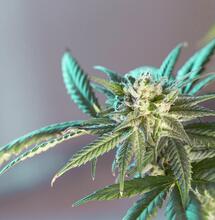How Cannabis Affects the Brain

For many years we were told that Cannabis deteriorates the brain, although even modern research cannot always prove damage.
For many years we were told that Cannabis deteriorates the brain, although even modern research cannot always prove damage.
With the advent of a change in attitude towards Cannabis and modern scientific research methods, we are beginning to learn the truth. Caution, however, must still be used when interpreting the headlines.
In 2014, a study was published in the Proceedings of the National Academy of Sciences wherein a group of scientists closely examined the brains of chronic Cannabis users. It has been difficult to measure the effects of Cannabis on the brain, due to different study protocols and varying methods of examination. Although these various methods of examination have revealed a variety of changes, it is still difficult to correlate the results with any specific change in anatomy.
Researchers in this published study decided to use three different magnetic resonance imaging (MRI) techniques to examine the brain structure of forty-eight chronic Cannabis users and sixty-two non-users. On average, the Cannabis users took the drug three times a day. The most obvious difference found was that the people who regularly used Cannabis had less gray matter volume in the orbitofrontal gyri.
This brain region is part of the orbitofrontal cortex (OFC), "one of the primary areas within the reward system, which is basically a network of brain regions implicated in the addiction process," said study author Dr. Francesca Filbey, an addiction researcher at the Center for Brain Health at the University of Texas at Dallas. "More specifically, the orbitofrontal cortex is important for decision-making. This is the area of the brain that would learn something is good for us or bad for us."
The orbitofrontal cortex is involved with mental processing. This area is associated with one's response to rewards and adversity and is strongly linked to the feeling of empathy. The orbitofrontal cortex has a high concentration of CB1 receptors as part of the body's natural endocannabinoid system.
This observation was correlated by addiction specialists in another study published in the Journal of Substance Addiction. A twelve-month investigation of adolescents enrolled in a drug treatment program for Cannabis found that forty percent of the ninety patients enrolled were more likely to experience symptoms associated with withdrawal. The specialists in this study found that the decrease in brain volume and CB1 receptor sites from the brain of non-Cannabis users was responsible for the withdrawal symptoms experienced by adolescents in their group. This is one possible conclusion - but not the only one.
What is the true implication? The answer is simple: the orbitofrontal cortex is by nature highly concentrated with CB1 cannabinoid receptors, the places in your brain where THC binds. As a result, it is much more vulnerable to the effects of a chronic flood of THC.
|
Brain scan after Cannabis use [Credit: wsj.com] |
In animal studies, "the number of those receptors decreased as a result of THC exposure as a way to regain balance in that system," Filbey reported. "Too much THC basically leads to lower numbers of those receptors in the brain."
It is this effect that gives credence to the "pot is addictive" camp. As Filbey explained, the fewer cannabinoid receptors a marijuana user has, the more THC is required to achieve the desired high. "This really describes tolerance," she said. "Around ten percent of users, on average, report changes in tolerance and also increased craving and withdrawal."
The marijuana users in this study were not just casual smokers - they used the drug on average three times per day. The change in volume and number of receptors is more indicative of the development of tolerance than of addiction.
While the orbitofrontal cortex was shown to be reduced in size in regular Cannabis users, the implications of this finding are inconclusive. In fact, this area of the brain was found to have an increase in neuronal connectivity. "The results suggest that increases in connectivity between neurons, both structural and functional, may be compensating for gray matter losses," said Dr Sina Aslan, also from the University of Texas at Dallas, a co-author of the MRI research study.
Earlier onset of Cannabis use induced greater structural and functional connectivity, the research showed. The greatest connectivity increases occurred as an individual started taking the drug. After six to eight years of continually consuming Cannabis, the increases in structural wiring declined, but users continued to display higher connectivity than non-users.
|
The change in volume and number of receptors is more indicative of the development of tolerance than of addiction [Credit: capitolotc.com] |
This may explain why chronic, long-term Cannabis users appeared to be "doing just fine," despite having a smaller orbitofrontal cortex, said co-author Dr. Francesca Filbey. She added: "To date, existing studies on the long-term effects of Cannabis on brain structures have been largely inconclusive due to limitations in methodologies. While our study does not conclusively address whether any or all of the brain changes are a direct consequence of Cannabis use, these effects do suggest that these changes are related to age of onset and duration of use."
While their findings are provocative, the researchers acknowledge that they do not prove that Cannabis use directly causes changes in the brain - a point of view shared by Dr. Asaf Keller, a professor of anatomy and neurobiology at the University of Maryland School of Medicine, who was not involved in the study. "As this is a retrospective study - and not a prospective one - it is impossible to determine whether individual differences in brain anatomy are related to genetic or environmental factors other than Cannabis use," he commented via e-mail. "In sum, there is no indication that the anatomical differences in the brains of marijuana users are caused by Cannabis use." There was not an MRI examination of the brains of these individuals before their Cannabis use to compare with these findings.
Cannabis use is now legal and accepted in several American states. Research is being conducted at a rapid pace and from a more balanced point of view. Even so, the many headlines must be further researched and read from an objective position. As more studies are done, the balance seems to be tipping in favor of the health-promoting benefits of Cannabis.



